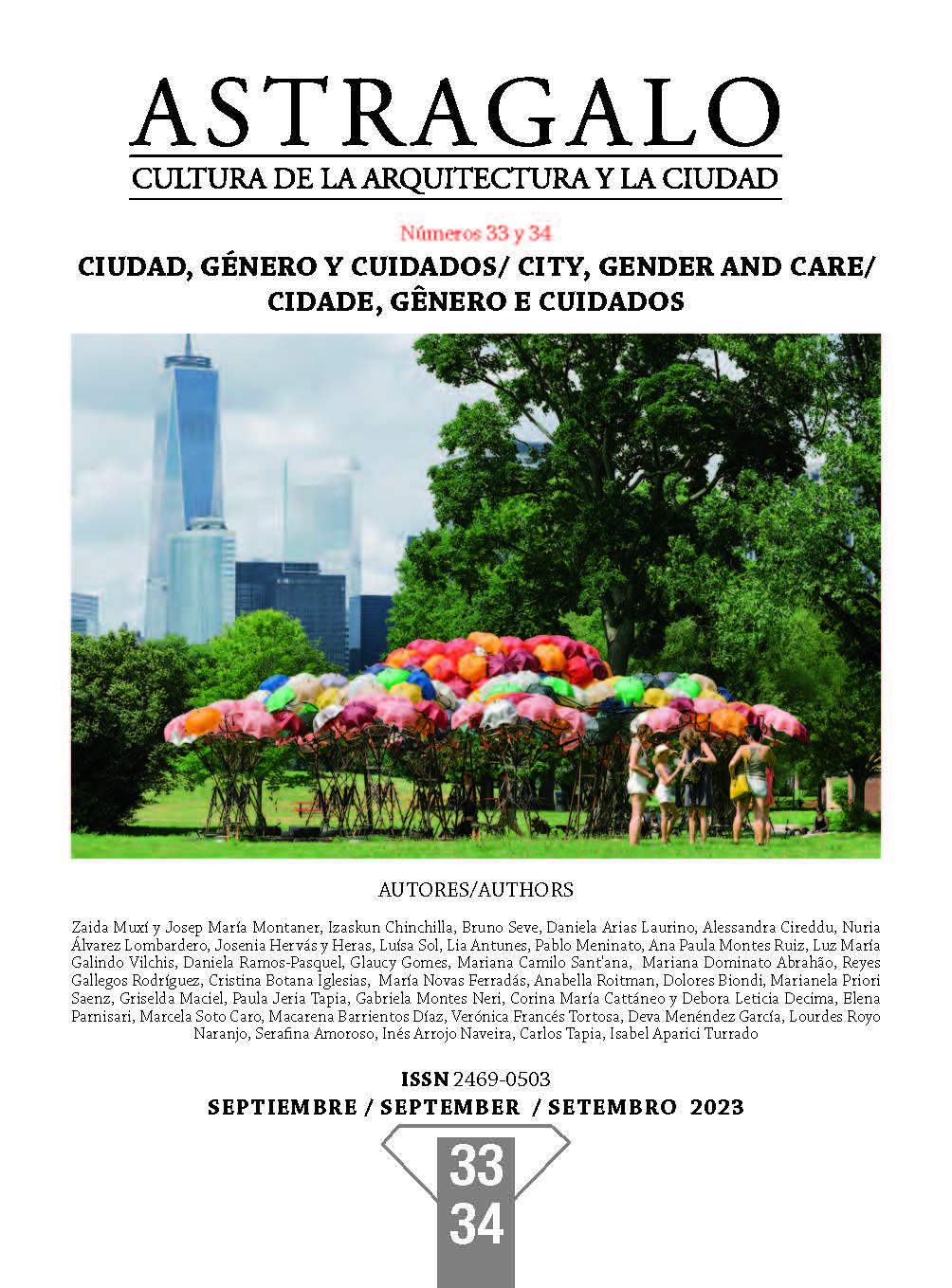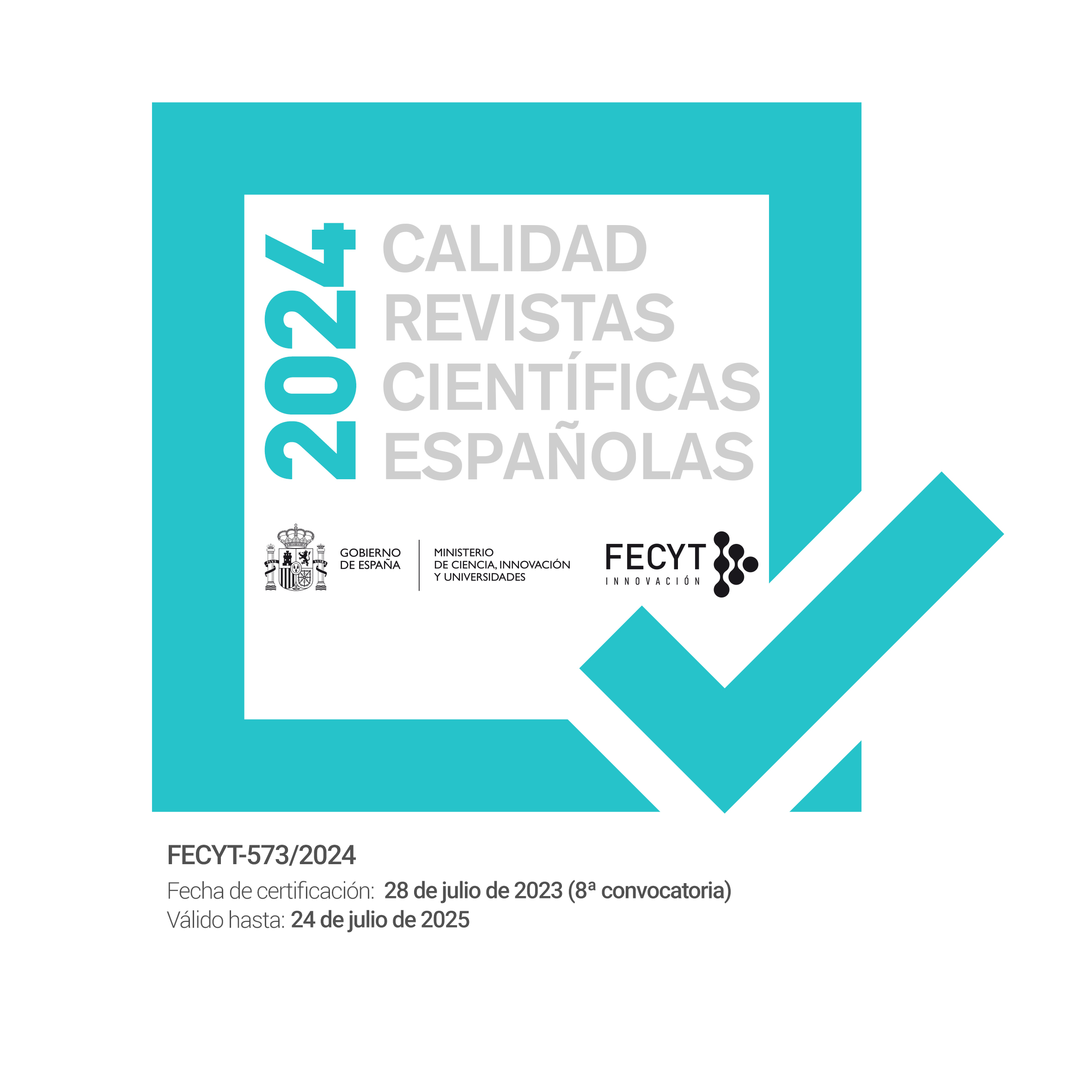Care as a Tool of Political Integration
Women's clubs and societies in London as the beginning of the first-wave feminist suffrage movement
DOI:
https://doi.org/10.12795/astragalo.2023.i33-34.05Keywords:
women´s clubs, suffragettes, activism, emancipation, first-wave feminismAbstract
During the early years of the industrial era, a growing division was established between productive and reproductive activities. In turn, these activities were allocated to men (productive) and women (reproductive) respectively. Among those reproductive activities, there was the act of care exclusively performed by women in the domestic space. This division created a disconnection of women from the public space, making it difficult for them to participate in politics. However, a group of women at the end of the 19th century subverted this situation by using care as a tool for political emancipation. By establishing places that offered care-related activities in the public space, in this case for other women, they achieved the first transition in the definition of care from a domestic to a social activity. In turn, this change made it possible for women to be incorporated into the productive fabric while enabling their presence in the urban space. This article analyses these places, the women's clubs in London that generated the first suffragette movements that led to women's right to vote in the United Kingdom. This led to their participation in their country's politics.
Downloads
References
Ainley, Rosa (Ed.). 1998. New Frontiers of Space, bodies and Gender. London: Routledge.
Alvarez Lombardero. 2016. “Una ciudad paralela de las mujeres: La red de clubs y asociaciones femeninos en Londres (1859-1914)”, Revista Proyecto, Progreso, Arquitectura, 14: 96-109
Arendt, Hannah. 2001. ¿Qué es la política? Barcelona: Paidós.
Borden, Iain. 1996. Strangely familiar: narratives of architecture in the city, London: Routledge.
Bradley, Ian C. 1976. The Call to Seriousness: The Evangelical Impact on the Victorians. New York: Macmillan Crawford, Elisabeth. 1999. Women´s suffrage movement: a reference guide, 1866-1928. London: UCL Press.
Daly, César. 1840. Revue générale de l´architecture et des travaux públics (RGA), no.1, col. 328.
Donzelot, Jacques. 1998. La policía de las familias. Valencia: Pre-textos.
Doughan, David y Gordon, Peter. 2006. Women, Clubs and Associations in Britain. London: Routledge.
Federici, Silvia. 2018. El patriarcado del salario. Críticas feministas al Marxismo. Madrid: Traficantes de Sueños.
Fishman, Robert. 1987. Bourgeois Utopias. The Rise and Fall of Suburbia, New York: Basic Books, Inc. Publishers.
Fraser, Nancy. 2016. “Contradictions of Capital and Care”. New Left review 100: 99-117.
Friedrichs, Hulda. 1896.” A peep at the pioneer club”, Young Woman, 4, 302–6
Herstein, Sheila. 1993. “The Langham Place Circle and Feminist Periodicals of the 1860s”, Victorian Periodicals Review, Vol. 26, No. 1: 24-27.
Hurtado, Amparo. 1999. “El Lyceum Club Femenino (Madrid, 1926-1939)”, Boletín de la Institución Libre de Enseñanza, 36, II época, 23-40.
Ibsen, Henrik. 2003 (1879). Casa de muñecas. Buenos Aires: Losada.
Jameson, Anna. 1859. Sisters of Charity and the Communion of Labour. Two Lectures on the Social Employments of Women. London: Longman, Brown, Green, Longmans, and Roberts.
Kent, Susan. 1987. Sex and Suffrage in Britain 1860-1914. Princeton, N.J.: Princeton University Press.
Lacey, Candida Ann (ed.) 1987. Barbara Leigh Smith Bodichon and the Langham Place Group. London: Routledge.
Mayhew, Henry. 1861. London labour and the London poor. Reino Unido.
Mendus, Susan y Rendall, Jane (Ed.). 1989. Sexuality and subordination: interdisciplinary studies of gender in the nineteenth century. London: Routledge.
Mies, María. 1998. Patriarchy and Accumulation on a World Scale Women in the International Division of Labour. London: Zed Books, 2014.
NU. CEPAL-ONU Mujeres. 2022. Hacia la construcción de sistemas integrales de cuidados en América Latina y el Caribe: elementos para su implementación.
Olsen, Donald. 1986. The city as a work of art: London, Paris & Vienna. New Haven: Yale University Press.
Pascoe, Charles Eyre. 1885. London of To-Day: An illustrated Handbook for the Season. Boston: Robert Brothers.
Patmore, Coventry. 1854-56. The Angel in the house. London: John W. Parker & Son.
Peake, Linda, Koleth, Elsa, Sarp Tanyildiz, Gökbörü, Reddy, Rajyashree N. y Patrick, Darren (ed). 2021. A Feminist Urban Theory for Our Time: Rethinking Social Reproduction and the Urban. Newark: John Wiley & Sons, Incorporated. Porter, Roy. 1996. London: A Social History, London: Penguin.
Rappaport, Erika. 2001. Shopping for pleasure: women in the making of London's West End. Princeton, N.J.; Chichester: Princeton University Press.
Rendell, Jane. 2002. The Pursuit of Pleasure: Gender, Space and Architecture in Regency London. New Brunswick, NJ: Rutgers University Press.
Stratigakos, Despina, 2008. A Women's Berlin: Building the Modern City. Minnesota: University of Minnesota Press.
The Pall Mall Gazette, March 4, 1912, p.12.
Tronto, Joan C. 2015. Who Cares? How to reshape a Democratic Politics. Cornell, Ithaca: Cornell University Press.
Tronto, Joan C. 2019. “Caring Architecture”. En Critical care: architecture and urbanism for a broken planet, editado por Angelika Fitz y Elke Krasny, 26-32, Cambridge, MA: MIT Press.
Critical. Architecture and Urbanism for a- broken planet
Walker, Lynne. 1996. “Well Placed Women: Spaces of the Women´s Movement in Victorian London”. En Strangely Familiar, Iain Borden, London: Routledge.
Wilson, Elizabeth. 1991. The Sphinx in the City: Urban Life, the Control of Disorder, and Women. Berkeley: University of California Press.
Worzala, Diane Mary Chase. 1982. The Langham Place circle: the beginnings of the organized women's movement in England, 1854-1870. Tesis de doctorado University of Wisconsin—Madison.
Woolf, Virginia. 1967 (1929) Una habitación propia. Barcelona: Seix Barral.
Downloads
Published
How to Cite
Issue
Section
License
Copyright (c) 2023 Nuria Alvarez Lombardero

This work is licensed under a Creative Commons Attribution-NonCommercial-ShareAlike 4.0 International License.


















